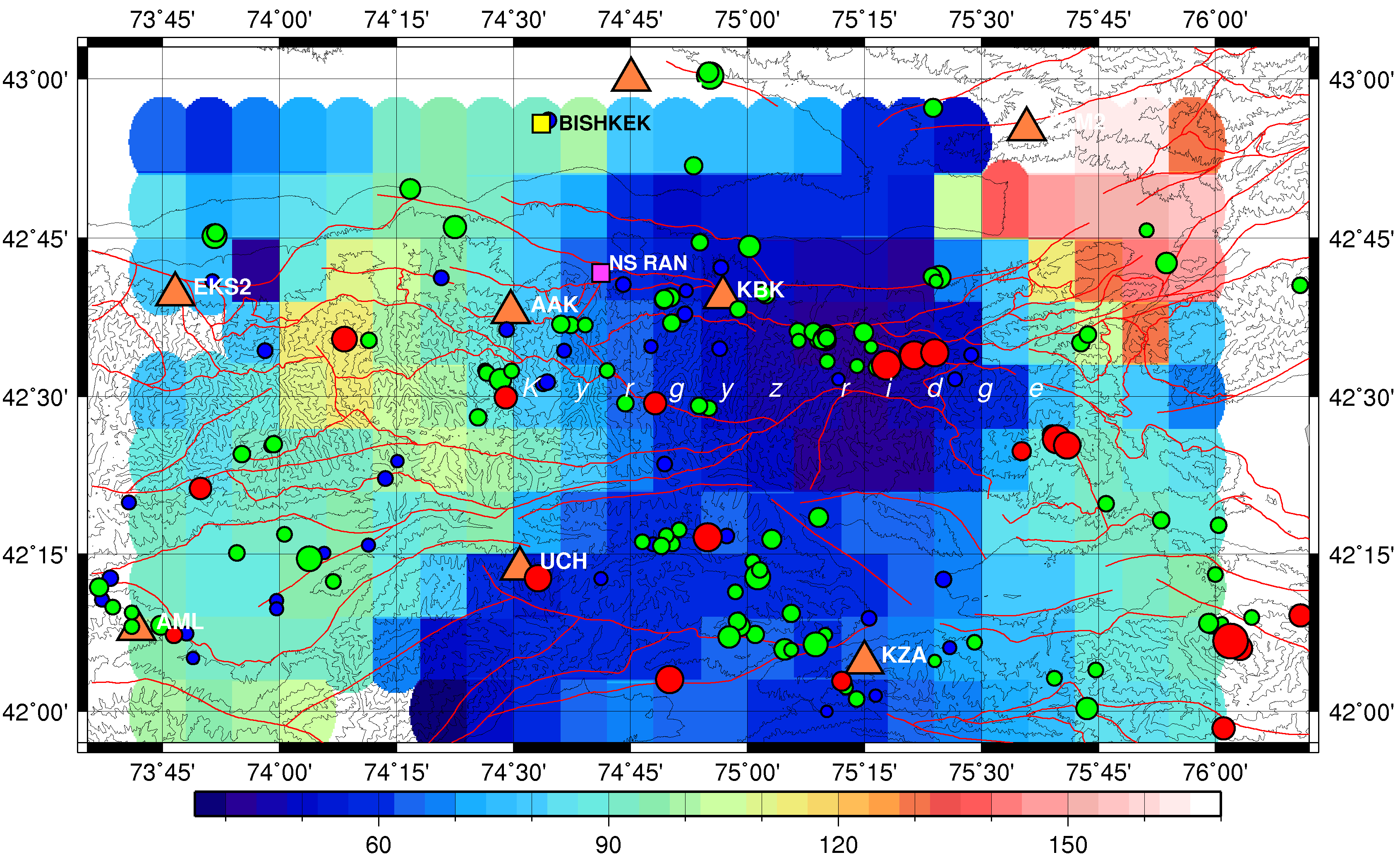Main results of the Project.
To solve the project tasks the complex of modern methods based on seismic data analysis has been applied.
The following methods were used for Q-factor determination:
- determination of Q-factor on the grounds of code waves study of certain seismic station, based on the model of single scattering of volume waves;
- determination of Q-factor based on the spectral relations of two seismic stations;
- construction of damping field based on tomographic inversion method, as well as seismic tomography method to determine the seismic waves rates, which were used in calculating the damping field.
To construct the focal spectrum for further computation the dynamic parameters of focal point, a modern approach to modelling inversion was applied taking into account the Green function (attenuation function and station corrections).
A method based on the spectral relation of horizontal component to vertical one (Nakamura Y. A.) was applied to calculate station corrections. The wave inversion method was applied to calculate the seismic moment tensor, and the method based on the signs of the first entries of seismic waves was used to calculate the focal mechanisms. During the reconstruction of stresses according to the field data collected in 2015 and 2017, the cataclastic analysis method of Yu.L. Rebetsky and O. I. Gushchenko was applied. The method of seismotectonic deformations of S. L. Jung was applied in the stress-strain state study. The following programs were developed to effectively solve the problems of the Project:
- Software for Q-factor determination on the grounds of code waves analysis.
- Software for Q-factor determination on the grounds of spectral relations of two seismic stations;
- Software for construction of damping field by the tomographic inversion method;
- Software for station corrections calculation based on spectral H/V relation; software for calculation of station spectrum;
- Software for focal spectrum calculation and determination of their characteristics.
Application of these methods and programs allowed filling up seismic data banks and obtain the following results:
1. Focal mechanisms for 280 seismic events that occurred in 2014-2017 in the territory of KNET network were determined.
2. The seismic moment tensors were determined for 64 earthquakes that occurred in 2014-2017 in the territory of Bishkek Geodynamic Proving Ground (BGPC);
3. Focal spectra were constructed, and dynamic parameters of 183 earthquakes with K>9.5, which occurred in the territory of Bishkek Geodynamic Proving Ground from 2000 to 2017, were obtained.
4. The calculation of Q-factor for the territory of Bishkek Geodynamic Proving Ground is based on the code-wave study and the dependence of Q-factor on the frequency for different depths of the study is determined: 65 km, 75 km, 85 km, 95 km and 104 km.
Изменение показателя степени n(а) и значения Q0 (б) для станций сети KNET и БГП в зависимости от глубины исследования.
5. Models of P and S-wave attenuation for 5 and 15 km depths were designed.
6. Station corrections of ten KNET network seismic stations were calculated on the basis of analysis of 90 local earthquakes S-wave records and more than 5000 sixty-second records of seismic noise. The station corrections and the dependence function of quality factor on frequency was further used in the calculation of focal spectra.
7. Comparison of dynamic parameters of earthquakes of the Bishkek Geodynamic Proving Ground range with DP earthquakes of Crimea, Baikal rift zone, Sakhalin island and Turkey was conducted.
8. The comparison of released stresses level at earthquakes with seimotectonic deformations and deformation field obtained on GPS data was conducted.

9. Field tectonophysics study aimed to reconstruction of main parameters of local stress states in mountain rocks massifs of the Kyrgyz Mountain Range northern slope by the data of paleostrsses geological indicators was conducted.
The results of works conducted were presented in 41 publications the 18 from which were published in pier-reviewed journals and various scientific events as well.
Last Updated on Tuesday, 20 March 2018 14:56
